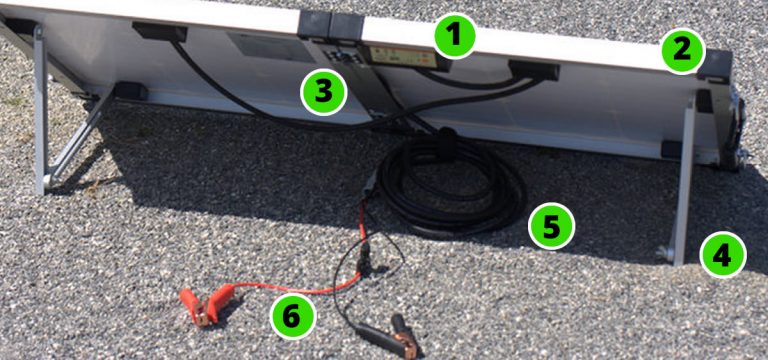As times have changed for Outside Supply, LLC , so must its business. So with these changes this webpage may contain affiliate links. If you use these links to buy something we may earn a commission. Thanks.
Portable Solar Guide
In the Portable Solar Guide, learn about the benefits and advantages of having a portable solar kit to charge your batteries in remote and off-grid situations. Simply unpack the solar panel and connect it to the battery that you want to charge. Position and direct the solar panel to have a clear view of the sun. Here are a few things you need to know about choosing a portable solar kit.
-
Micro to Small – These portable solar kits are designed to charge small items like cell phones and small batteries. They often fold into very small packages that are not much larger than a regular envelope, although the footprint can be a few inches thick. The units often have a charging output of 1 Watt to 20 Watts.
-
Medium To Large – The kits are used to charge anywhere from one battery to a battery bank. These portable solar kits have out put ranges from 40 watts all the way up to 160 watts. They often include Charge Controllers inline and have specialized connection kits. This article will mainly focus on this segment of panels.
Portable Solar Kit Basics
BENEFITS OF PORTABLE SOLAR PANELS For years we sold rigid solar panels that people converted into their very own solar kits. Now many manufacturers have created truly portable solar charging kits.
These panels included the ability to do many of the following actions from a single kit:
Easily stow solar panel when not in use Easy to unpack and setup An integrated inline charge controller Enough wire to move into a more sunny area Legs that can tilt to maximize sun Quick connect battery connectors Accessories that allow for easy setup in your situation
PORTABLE SOLAR KIT SIZES When purchasing medium to large portable solar kits you will find only a few sizes on the market. These kits are made in 90 Watts, 130 Watts, and 200 Watts. The main differences are the physical size of the panels, the price, and the output amperage from the panels.
Finding the right size for application involves determining a couple pieces of information:
Area available to store panel when not in use. (Physical opening and storage size) Amount of power required. (More solar charging power is almost always better) Your budget to purchase the panel.
COMMON PORTABLE SOLAR PARTS & TERMINOLOGY
Below you will find a diagram referencing each part of a typical portable kit.

- Solar Charge Controller – this device allows the solar panels to charge the battery when it needs additional power. The charge controller will stop or significantly reduce the power to battery based on the current charge of your battery. These range from Shunt Type, PWM, and MPPT. The most common choice is the PWM – or Pulse Width Modulation.
- Rigid Solar Panels – Most portable units are being made with rigid solar panels to increase durability of the unit when in the field.
- Hinged Panels – The center of the panel is a hinge between two separate photo-voltaic panels. This allow for reduced size when stowing.
- Tilt and Place Legs – The legs are used to keep the panel in any configuration other than flat on the ground. The panels can be better angled to capture the maximum sun for your area. The legs often have a bolt for easy adjustment.
- Solar Cable – Most portable solar kits have a solar cable able to extend the reach of the panel by 15 to 30 feet.
- Battery Connectors – The battery connectors on most portable solar kits are designed for easy attachment and removal from your battery. This includes the use of alligator clamps and also Anderson connectors.
A collection of portables that work with solar on the side connections
Connecting to the solar port on the side of your RV
The port on the side is connected directly to the battery in most wiring setups. Check your Rv's manual to make sure this is the case.
This port has a standard connector in many portable solar kits. Commonly referred to as an SAE connector. Portable kits usually have the charge controller in line or on the back of the panel. This is why the port usually is wired directly to the battery.
If there is a side connection, a customer needs to look at our portable solar units and our portable solar guide for more information.
Many of the portable solar kits come with a wide range of connectors. This allows easy connecting to your RV and also other equipment.





